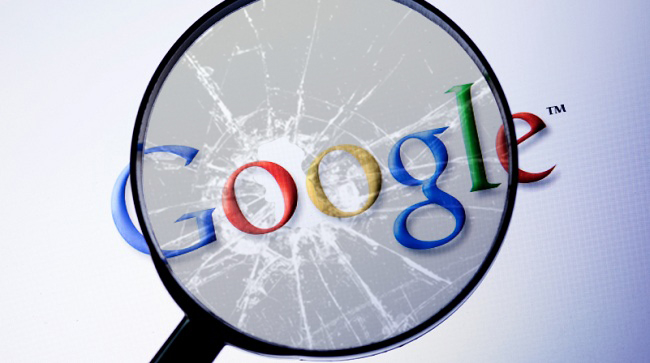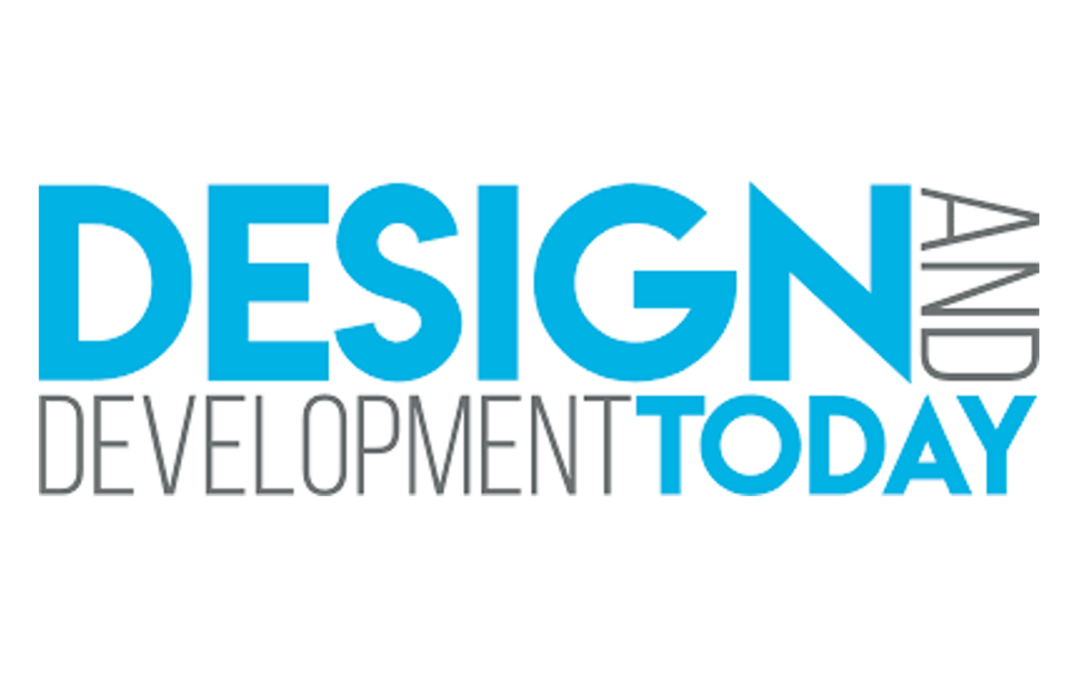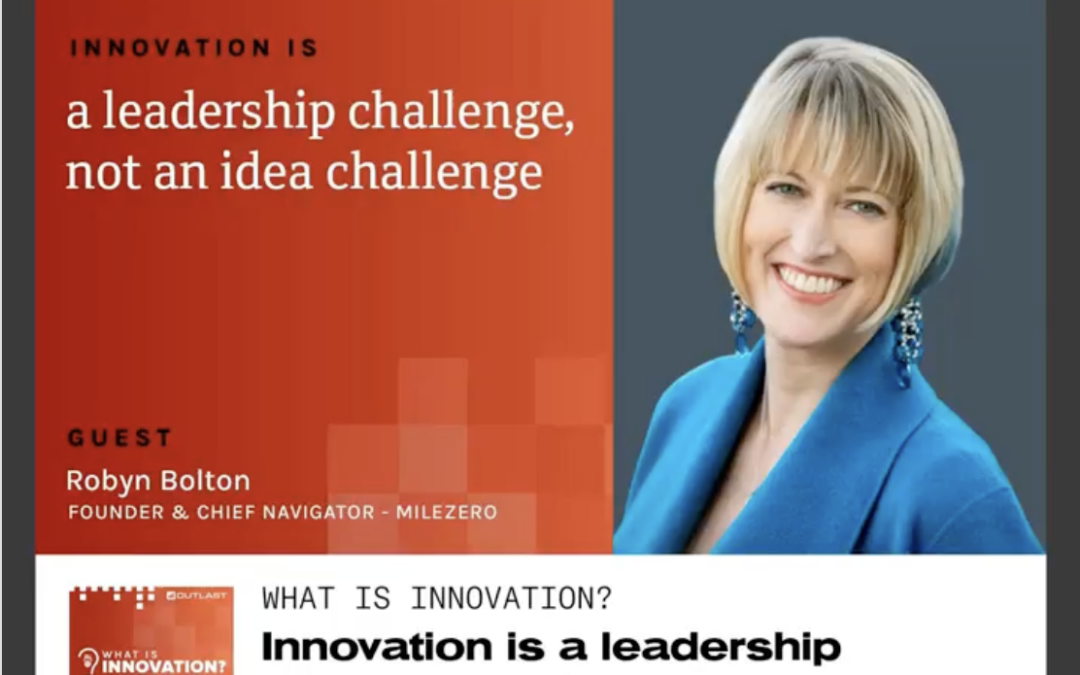
by Robyn Bolton | May 17, 2023 | Innovation, Leadership, Stories & Examples
A few weeks ago, a Google researcher leaked an internal document asserting that Google (and open AI) will lose the AI “arms race” to Open Source AI.
I’ll be honest: I didn’t understand much of the tech speak – LLM, LLaMA, RLHF, and LoRA are just letters to me. But I understood why the memo’s writer believed that Google was about to lose out on a promising new technology to a non-traditional competitor.
They’re the same reasons EVERY large established company loses to startups.
Congratulations, big, established industry incumbents, you’re finally innovating like Google!
(Please note the heavy dose of sarcasm intended).
Innovation at Google Today
The document’s author lists several reasons why “the gap is closing astonishingly quickly” in terms of Google’s edge in AI, including:
- “Retraining models from scratch is the hard path” – the tendency to want to re-use (re-train) old models because of all the time and effort spent building them, rather than start from scratch using newer and more flexible tools
- “Large models aren’t more capable in the long run if we can iterate faster on small models” – the tendency to want to test on a grand scale, believing the results are more reliable than small tests and drive rapid improvements.
- “Directly competing with open source is a losing proposition” – most people aren’t willing to pay for perfect when “good enough” is free.
- “We need them more than they need us” – When talent leaves, they take knowledge and experience with them. Sometimes the competitors you don’t see coming.
- “Individuals are not constrained by licenses to the same degree as corporations” – Different customers operate by different rules, and you need to adjust and reflect that.
- “Being your own customer means you understand the use case” – There’s a huge difference between designing a solution because it’s your job and designing it because you are in pain and need a solution.
What it sounds like at other companies
Even the statements above are a bit tech industry-centric, so let me translate them into industry-agnostic phrases, all of which have been said in actual client engagements.
- Just use what we have. We already paid to make it.
- Lots of little experiments will take too long, and the dataset is too small to be trusted. Just test everything all at once in a test market, like Canada or Belgium.
- We make the best [product]. If customers aren’t willing to pay for it because they don’t understand how good it is, they’re idiots.
- It’s a three-person startup. Why are we wasting time talking about them?
- Aren’t we supposed to move fast and test cheaply? Just throw it in Google Translate, and we’ll be done.
- Urban Millennials are entitled and want a reward. They’ll love this! (60-year-old Midwesterner)
How You (and Google) can get back to the Innovative Old Days
The remedy isn’t rocket (or computer) science. You’ve probably heard (and even advocated for) some of the practices that help you avoid the above mistakes:
- Call out the “sunk cost fallacy,” clarify priorities, and be transparent about trade-offs. Even if minimizing costs is the highest priority, is it worth it at the expense of good or even accurate data?
- Define what you need to learn before you decide how to learn it. Apply the scientific method to the business by stating your hypothesis and determining multiple ways to prove or disprove it. Once that’s done, ask decision-makers what they need to see to agree with the test’s result (the burden of proof you need to meet).
- Talk. To. Your. Customers. Don’t run a survey. Don’t hire a research firm. Stand up from your desk, walk out of your office, go to your customers, and ask them open-ended questions (Why, how, when, what).
- Constantly scan the horizon and seek out the small players. Sure, most of them won’t be anything to worry about, but some will be on to something. Pay attention to them.
- See #3
- See #3
Big companies don’t struggle with innovation because the leaders aren’t innovative (Google’s founders are still at the helm), the employees aren’t smart (Google’s engineers are amongst the smartest in the world), or the industry is stagnating (the Tech industry has been accused of a lot, but never that).
Big companies struggle to innovate because operating requires incredible time, money, and energy. Adding innovation, something utterly different, to the mix feels impossible. But employees and execs know it’s essential. So they try to make innovation easier by using the tools, processes, and practices they already have.
It makes sense.
Until you wake up and realize you’re Google.

by Robyn Bolton | May 11, 2023 | Leadership, Stories & Examples, Tips, Tricks, & Tools
“We have successfully retained the opportunity for improvement.”
When the CEO said this to kick off a meeting, I knew we were in for an adventure. He smirked at the corporate double-speak, paused for the laughter, then outlined all the headwinds facing the business. But the only thing I remember from that meeting was his opening line.
I think about it all the time. Because it seems to apply all the time.
And despite the turmoil brought on by a pandemic, a war, and an economic slowdown, we have successfully retained the opportunity to improve how we deal with uncertainty.
That isn’t to say we haven’t improved over the past three years. In fact, at an event sponsored by NextUp, four executives from P&G, CVS, Hannaford, and Intel shared what they learned and how they changed while navigating uncertainty.
Listen more
Dave DeJohn, Director of Operations for Hannaford, talked about the importance of listening deeply and constantly to employees, especially those on the front lines. Consistent with its core values of family, community, quality, and value, store associates are trained that the customer is always right. However, as incidents of verbal abuse increased during the lockdowns, employee satisfaction and mental health declined. By closely listening and observing what was happening in stores, Hannaford’s leadership modified their customer service approach to “the customer is always right, within reason” and empowered employees to stand up for themselves and each other when faced with hostile shoppers.
Stronger relationships lead to stronger results
Every executive shared stories from the early days of working from home – technical glitches, kids invading calls, and even cats positioning themselves awkwardly in front of cameras when the human stepped away. Far from being signals of a lack of commitment or professionalism, these moments transformed roles and titles into human beings, juggling all the things humans must juggle. Once people started seeing others as fellow humans versus bosses, peers, or subordinates, they connected on a human level and formed genuine and trusting relationships. Those relationships led to better collaboration, more effective troubleshooting, and better business results.
Concise concrete communication is critical
In periods of uncertainty, information is power. But it’s also constantly changing. For that reason, constant communication is a must. But in a large organization, communication often comes from multiple departments – employee relations, HR, health and safety, operations, and marketing, to name a few – and that can be overwhelming. For this reason, DeJohn learned that keeping every message concise (ideally the length of a tweet but no more than a short paragraph) and concrete (specific, tangible, tactical rather than high-level platitudes) proved critical to keeping people aligned and moving forward.
Just because you can, doesn’t mean you need to
Keris Clark, VP of Sales at P&G, spoke about the drastic shift in her work/life balance when she could no longer travel to see customers or attend meetings. Instead of taking the first flight from Boston to Seattle for a meeting and then a red-eye back home, she suddenly had time to work out, cook, and spend time with family. As travel became safer and invitations to far-away meetings came in, she thought more critically about whether or not to book the tickets. Like most of us, she still travels for some things, but it’s no longer the default option now that more people are used to video calls and other ways of working.
We can do things differently and still deliver
COVID’s effect on the supply chain is well documented, and Tiffiny Fisher, Chief of Staff and Technical Assistant for Intel’s America region, gave us a view into Intel’s situation in the earliest days of the pandemic. With fabrication, assembly, and testing sites throughout Asia, Intel had to work quickly to figure out how to continue operating while staying with government lockdown guidelines. Ultimately, hundreds of employees volunteered to leave their families and live in hotels near Intel facilities so that they could continue operating. It was a huge sacrifice by employees and probably not one that anyone would want to make again. Still, it proved that Intel, with the support of its employees, could quickly make massive changes to its operations while continuing to deliver results.
Uncertainty can be deeply uncomfortable, even frightening, even though we face it every day. Building the skills to navigate it and learning lessons about what works and doesn’t can make it easier. But if you still struggle, don’t worry. It just means you’ve successfully retained the opportunity for improvement.




